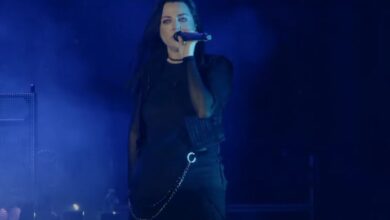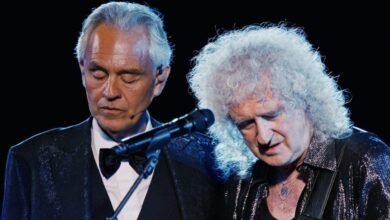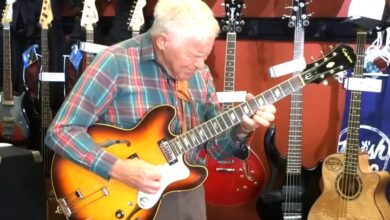Heart’s Stairway to Heaven Tribute That Brought Led Zeppelin to Tears
A tribute performance can become more than a cover when it tells a story about legacy, respect, and continuity. That is exactly what happened at the 2012 Kennedy Center Honors, when Heart reimagined “Stairway to Heaven” not as a note-for-note replica, but as a carefully staged narrative that built from intimacy to catharsis. The moment resonated because it acknowledged the weight of Led Zeppelin’s history while daring to reinterpret it in front of the authors themselves.
The setting heightened everything. The Honors are not a rock concert; they are a national arts ceremony in a formal hall, with heads of state, luminaries, and peers watching. That formality reframed the song’s mythos. Instead of smoke machines and amplifiers, the audience saw tuxedos, spotlights, and a balcony where the surviving members of Led Zeppelin sat as honorees, waiting to see how others would write on their musical canvas.
Heart’s task was both musical and diplomatic: they had to honor the original while avoiding the museum-piece trap. Their solution was to start spare—acoustic guitar, voice, restraint—and let the arrangement bloom gradually. That decision mirrored the architecture of the studio recording yet translated it to the proportions of a state occasion. The first minutes invited attention rather than demanding it, the way a great speech begins in a whisper.
Nancy Wilson’s acoustic guitar set the tone: calm, unhurried, with the harmonic clarity the opening needs to feel like a threshold. Ann Wilson entered with a vocal that was reverent but unafraid to be herself—vibrato and warmth intact, dynamics held in reserve. By resisting early crescendos, she preserved the runway the performance would need later when the ensemble widened and the emotional stakes rose.
Jason Bonham’s presence behind the kit added an undertow from the first downbeat. Even while the drums were mixed with restraint early on, the knowledge of who was playing—and whose legacy he carries—cast a subtle shadow over the arrangement. It signaled that the tribute would not sidestep the band’s history; it would walk straight toward it. The performance understood that Zeppelin’s power has always been musical and personal at once.
As the song unfolded, the instrumentation thickened. Strings entered to color sustained harmonies; auxiliary players sprinkled arpeggios and countermelodies that filled the hall without muddying the vocal line. The pacing stayed deliberate. Each new texture felt earned. This additive design allowed the audience to feel the piece “becoming” itself in real time, like stair-steps forming beneath each footfall.
The entry of the choir transformed the sonic scale from chamber to cathedral. Choral pads under the verses made the harmonic floor feel living and human, not just orchestral. When the singers took on the final refrains, the performance achieved its narrative aim: the song belonged to many, voiced by many, gathered in gratitude around the balcony. The choir didn’t just decorate the arrangement; it explained it.
One visual decision connected the tribute’s sound to its soul: the bowler hats worn by members of the choir and by Jason Bonham. That simple silhouette evoked John Bonham without a single word or graphic. The instant the hats appeared, the performance acknowledged absence and presence at the same time—the musician who isn’t there and the spirit that still guides the groove. It’s hard to overstate how effectively that small design choice deepened the moment.
The guitar solo can make or break any “Stairway” performance, and here it was phrased to honor rather than to impersonate. The lines leaned into the melodic contour listeners expect, but the tone and articulation fit the room: singing sustain over pyrotechnics, articulation over acrobatics. It was the right calculus for a hall where nuance carries farther than sheer volume, and where every bend is magnified by the stakes of the occasion.
Camera direction—usually invisible when done well—played a musical role. The editors cut between the stage and the balcony at precisely the moments that mattered: a lingering reaction from Robert Plant as the choir swelled; a glance between Jimmy Page and John Paul Jones as the solo peaked; a shot of Jason Bonham framed so the bowler hat read as an emblem, not a prop. These choices let viewers at home feel the room breathe.
What moved the honorees was not any single flourish but the totality: a performance that traced the song’s original arc while reframing it as a communal offering. Ann Wilson’s final lines—supported by the full choir—landed like a benediction. The applause that followed sounded different from a rock encore; it sounded like gratitude, the sound an art form makes when it recognizes itself in a mirror held by others.
In the days and years that followed, the video circulated widely, becoming the example people point to when they talk about “how to do a tribute right.” Part of its staying power comes from how deftly it avoids two common pitfalls: empty nostalgia and competitive one-upmanship. Instead, it treats the song as a living text that can be interpreted with humility and imagination.
The performance also re-centered Heart’s reputation in a way casual listeners sometimes miss. Long before this night, Ann and Nancy Wilson had built careers balancing riff-driven power with interpretive sensitivity. Their “Stairway” crystallized that dual skill in a single showcase, reminding a global audience that great interpreters are great because they listen—to the song, to the room, to the moment.
There’s a cultural subtext worth noting. In a rock canon historically dominated by male performers and storytellers, two women taking on one of rock’s most venerated epics in front of its originators—and doing so with authority and grace—felt quietly radical. The arrangement didn’t feminize the song or harden it; it humanized it, showing that the core of “Stairway” isn’t machismo or mystique, but yearning.
For Led Zeppelin’s members, the tears many saw were not just about being flattered. They were about recognition—of a friendship that began in youth, of a bandmate lost too soon, of the improbable journey from pubs to a presidential balcony. Tribute performances often risk flattening that history into kitsch. This one did the opposite: it let time into the room and invited everyone to feel it together.
Why does the moment still resonate? Because it sets a standard for how to honor the giants: know the original deeply, bring something of your own, and place the artist’s story—losses and all—at the center. The arrangement Heart brought to Washington was not only musically excellent; it was emotionally literate. That is why the clip keeps finding new viewers, and why the night still teaches a masterclass in reverence without imitation.
In the end, the performance stands as a reminder that the best tributes are bridges. They connect creators and successors, the past and the present, private grief and public celebration. Heart built such a bridge that night, step by step, until everyone in the hall—performers, honorees, and audience—was standing on the same span, looking out at the long view of rock history and feeling, together, what it means to belong to it.





